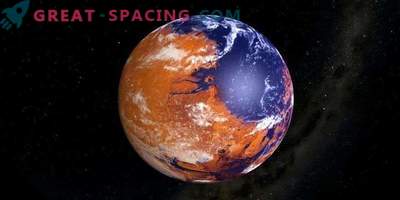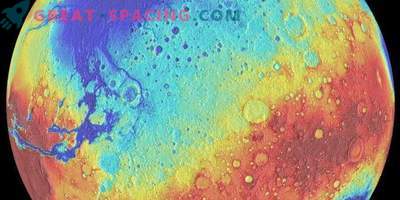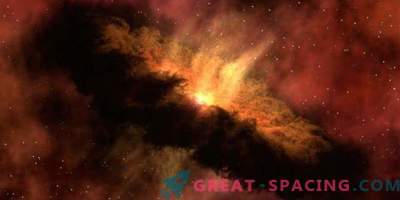
A new study indicates that Mars was formed on the site of the asteroid belt and only later moved to its current location.
Previously assumed that Mars appeared next to Earth and used the same building materials. But then why are the planets so different in composition? Mars contains lighter elements resembling those found in meteorites. This prompted researchers from Japan, the United States and Britain to create simulations to understand the movement of the Red Planet through the system.
The model showed that Mars should have appeared near the Earth, but it did not take into account the difference in composition. Therefore, researchers paid special attention to Jupiter, which influenced the formation of the inner planets. According to the theory, the formed Jupiter pushed a huge mass of material to the Sun and contributed to the appearance of Venus, the Earth, and pushed the material away from Mass, taking massiveness from the planet (11% of the Earth's).
Simulations allowed to get new information about the Red Planet. A small percentage suggests that Mars appeared much farther from the Sun, and then Jupiter’s gravity pushed him to its current position.
Scientists believe that low probability does not indicate an erroneous assumption. It’s just that we don’t have a better physical mechanism to explain the formation process, or we didn’t take into account certain scenarios.

Solar System Model
Researchers believe that with enough time this could happen. But, if this is so, then you will have to change the ideas about the early planet. First of all, it was further from the Sun, which means it is colder and could not maintain water in a liquid state or life. This theory literally competes with the idea of a warm and humid planet.
The appearance of Mars in the asteroid belt was to occur before the crust stabilized or the atmosphere appeared. At the end, asteroids were to attack it, forming craters. Moreover, such attacks could melt the cryosphere and the crust to resume the hydrological cycle.
These findings lead scientists to take a fresh look at the locations of other planets in terms of composition. If we confirm the similarity of the composition of Venus and Earth, then the theory with Jupiter as a “pusher” would have gained more weight. Therefore, in the 2025s. Roscosmos and NASA plan to send a mission to Venus-D.
Among the questions are the details of the formation of giant planets. They could not appear on their current locations, because the external system did not have enough mass at an early stage. Perhaps they were created close, and then moved away due to gravity. Gradually, scientists will receive more and more data on the history of the formation of the entire system and the nature of the planetary formation in our galactic region.











































